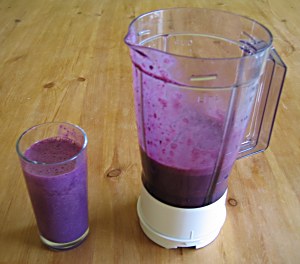Uniform measurement standards for antioxidants could be used to provide health-conscious consumers with more reliable data about nutritional supplements as well as assisting researchers in tracking the long-term epidemiological effects of such compounds. According to researchers at an international gathering the decision to standardise antioxidants could also preclude manufacturers making spurious and often misleading claims for their purportedly disease-fighting products.
At the First International Congress on Antioxidant Methods held on the 16th to 18th June in Orlando, sponsored by the American Chemical Society, 144 scientists and experts from industry, academia and government discussed the latest claims for antioxidants and identified the methods used to support such claims. There was widespread agreement that measurements on antioxidants must be standardized. However, there was unfortunately disagreement on the best method to determine the benefits of such compounds, including vitamin C, vitamin E, the carotenoids, and selenium. Antioxidant advocates claim these compounds can reduce the risk of cancer and heart disease as well as fight aging, arthritis and Alzheimer’s disease.

A blueberry smoothie could be all you need to get your daily ration of antioxidants, but standard tests on supplements and foodstuffs could say for sure (Credit: David Bradley)
It is difficult to compare the antioxidant content of a can of blueberries to a fruit smoothie, explains John Finley, chair of the meeting organizing committee. There’s no uniformity in the way antioxidants are evaluated. You don’t know what you’re getting, and that’s not fair to consumers. Currently, there are almost one hundred different methods being used to measure antioxidants. A little difference in methodology can make a huge difference in results, Finley cautions, We need to identify the four or five best methods and make them consistent. Finley is Chief Technical Officer at botanic extract supplier A.M. Todd Company in Montgomeryville, Pennsylvania, and explains that a multidisciplinary group of scientists is now working together to set standards on the methodology used to measure antioxidants. However, it could take two to three years before the viability of a standard is demonstrated.
Once official standards are established, the ACS’s Journal of Agricultural and Food Chemistry will become the first peer- reviewed scientific journal to require contributors to adhere to the standards in reporting new antioxidant measurement methods and in measuring antioxidant levels in samples.

Fresh fruit and vegetables are a highly recommended source of antioxidants with no argument over standards (Credit: David Bradley)
However, while standards for antioxidants used as food preservatives and supplements would be very welcome, the general population might benefit more from eating healthier. The bottom line is the same: eat more fruits and veggies, says meeting co-organiser Ronald Prior of the US Department of Agriculture.

Ronald Prior
Further reading
A M Todd Company
http://www.amtodd.com/flash_content.php
Ronald L Prior
http://www.uams.edu/acnc/prior.html
Journal of Agricultural and Food Chemistry
http://pubs.acs.org/journal/jafcau